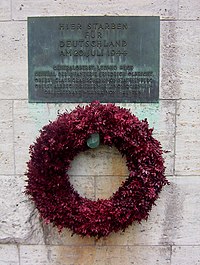
Photo from wikipedia
The effects of fumonisins on sphingolipids in turkeys are unknown, except for the increased sphinganine to sphingosine ratio (Sa:So) used as a biomarker. Fumonisins fed at 20.2 mg/kg for 14… Click to show full abstract
The effects of fumonisins on sphingolipids in turkeys are unknown, except for the increased sphinganine to sphingosine ratio (Sa:So) used as a biomarker. Fumonisins fed at 20.2 mg/kg for 14 days were responsible for a 4.4 fold increase in the Sa:So ratio and a decrease of 33% and 36% in C14-C16 ceramides and C14-C16 sphingomyelins, respectively, whereas C18-C26 ceramides and C18-C26 sphingomyelins remained unaffected or were increased. Glucosyl- and lactosyl-ceramides paralleled the concentrations of ceramides. Fumonisins also increased dihydroceramides but had no effect on deoxysphinganine. A partial least squfares discriminant analysis revealed that all changes in sphingolipids were important in explaining the effect of fumonisins. Because deoxynivalenol and zearalenone are often found in feed, their effects on sphingolipids alone and in combination with fumonisins were investigated. Feeding 5.12 mg deoxynivalenol/kg reduced dihydroceramides in the liver. Zearalenone fed at 0.47 mg/kg had no effect on sphingolipids. When fusariotoxins were fed simultaneously, the effects on sphingolipids were similar to those observed in turkeys fed fumonisins alone. The concentration of fumonisin B1 in the liver of turkeys fed fumonisins was 0.06 µmol/kg. Changes in sphingolipid concentrations differed but were consistent with the IC50 of fumonisin B1 measured in mammals; these changes could explain the relative resistance of turkeys to fumonisins.
Journal Title: International Journal of Molecular Sciences
Year Published: 2022
Link to full text (if available)
Share on Social Media: Sign Up to like & get
recommendations!